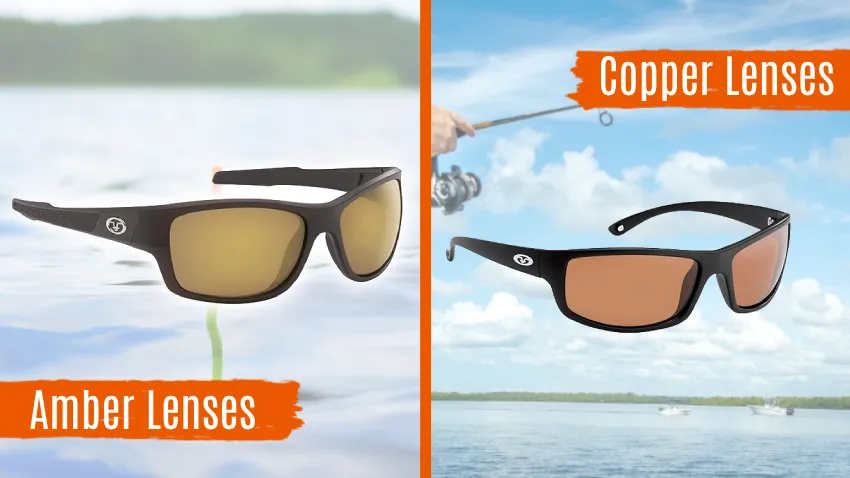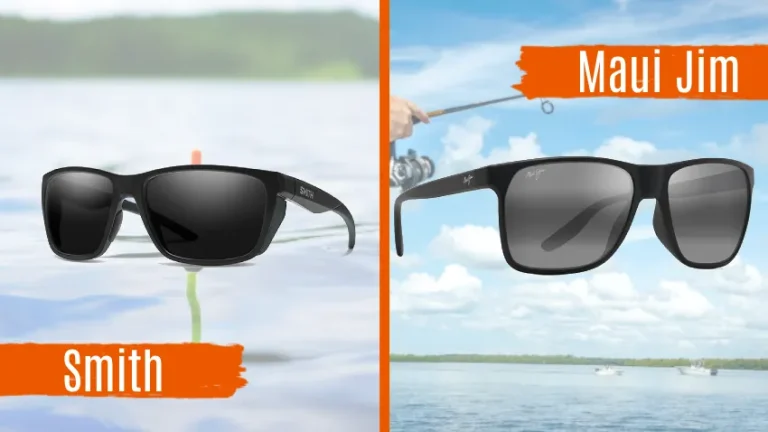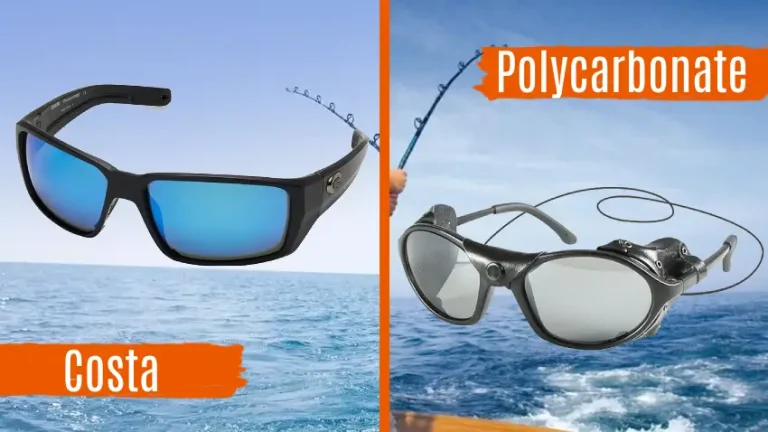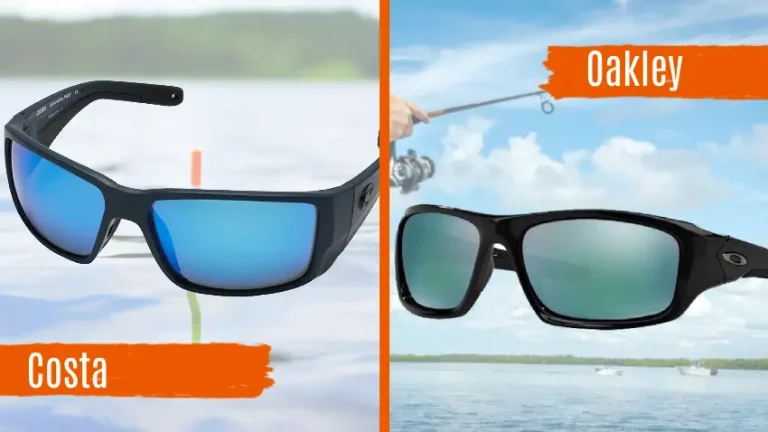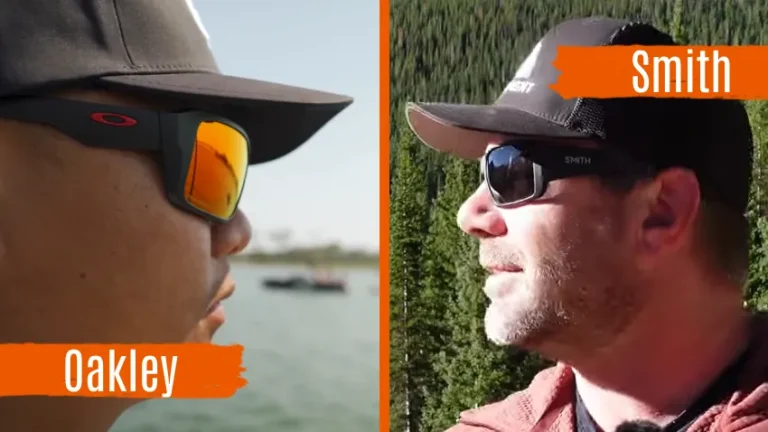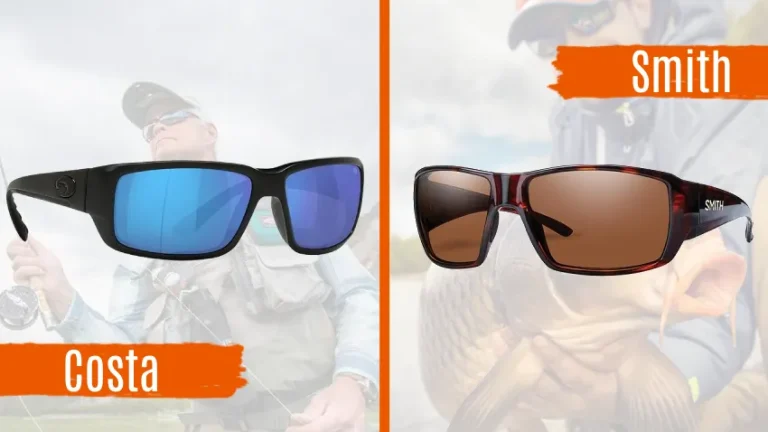Amber vs Copper Lenses for Fishing: 6 Primary Differences
To enhance your fishing experience, you should wear high-quality sunglasses. They protect your eyes from UV rays, so you can see underwater features and detect fish movements. Amber and copper lenses are two popular choices for fishing eyewear, but what are the differences, and which one is better?
Amber lenses have a warm, reddish-brown tint. These lenses are ideal for low-light and cloudy conditions. But copper lenses have a reddish or brown tint, designed for bright, sunny days with intense glare. Both lenses enhance visual clarity, but amber lenses enhance the ability to see underwater features.
We will discuss the differences between amber lenses and copper lenses in this article so that you can make an informed decision when choosing a fishing lens. So, continue reading.
Key Differences Between Amber and Copper Lenses for Fishing

When choosing between amber and copper lenses for fishing, understanding the key differences is crucial.
- Color and tint
- Light conditions
- Glare reduction
- Visual clarity
- UV Protection
- Pricing
1. Color and Tint
Amber lenses feature a warmer, reddish-brown tint that enhances contrast and depth perception under various lighting conditions. They excel in low-light and overcast situations, where they help to bring out details and improve visual clarity.
On the other hand, copper lenses have a rusty red or brown tint that provides excellent contrast enhancement. These lenses suit bright, sunny conditions, effectively reducing glare and blocking blue light. By reducing glare, copper lenses help to minimize eye strain and improve visibility on the water.
2. Light Conditions
Amber lenses are best for low-light and cloudy conditions, such as early mornings or late evenings. They excel at enhancing contrast and improving visibility in dim lighting. These lenses effectively filter out blue light, which can be distracting and cause eye strain.
Conversely, copper lenses are specifically designed for bright and sunny days with intense glare from the water’s surface. They effectively reduce glare and enhance color contrast, making spotting fish and underwater structures easier. However, copper lenses aren’t as effective in low-light situations as amber lenses.
3. Glare Reduction
For reducing glare while fishing, the key differences between amber and copper lenses lie in their effectiveness and performance. While amber lenses can help reduce glare to some extent, they aren’t as effective as copper lenses in intense, direct sunlight with high glare from the water’s surface.
Alternatively, copper lenses reduce glare from water, making them a top choice for fishing in bright and sunny conditions. Their unique properties enable them to minimize the strain on your eyes caused by the reflected sunlight, allowing you to see clearly and comfortably while out on the water.
4. Visual Clarity
When choosing between copper lenses and amber lenses for fishing, the visual clarity each lens provides is a key factor to consider. Amber and copper lenses offer good visual clarity but have distinct advantages in different lighting conditions.
In various lighting conditions, amber lenses effectively enhance your ability to see underwater features, such as rocks, structures, and fish. They provide a sharp and clear view of the underwater environment, allowing you to spot fish and navigate obstacles easily.
On the other hand, copper lenses excel in high-glare situations by reducing surface glare. This glare reduction enhances visual clarity, enabling you to see beneath the water’s surface more clearly.
5. UV Protection
Amber lenses typically offer good UV protection. Most quality amber lenses are designed to block 100% of UVA and UVB rays, which are harmful ultraviolet rays from the sun. The color of amber lenses can enhance contrast and depth perception in various lighting conditions.
However, Copper lenses, similar to amber lenses, are designed to provide excellent UV protection, blocking nearly 100% of UVA and UVB rays. The copper tint also enhances contrast and is well-suited for various outdoor activities.
6. Pricing
Depending on factors such as brand, lens material, and additional features, amber lenses can vary in price from $17.99 to $21.19. You can find affordable options, especially in non-designer or generic brands, and more expensive amber lenses in high-end designer sunglasses.
Copper lenses also come in various price ranges, around $15.95 to $29.95. While some affordable sunglasses with copper lenses can be found, high-quality copper lenses with advanced coatings and features may cost up to $100.00.
Amber or Copper Lenses: How to Choose the Best for Fly Fishing?
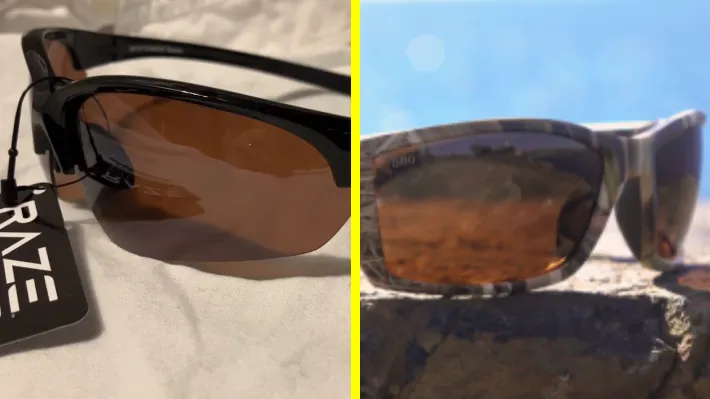
When deciding between amber or copper lenses for fly fishing in South Dakota or any other spots, there are a few key factors to consider.
A. Consider the Light Conditions
To select the best fishing sunglasses for fly fishing, consider the light conditions and opt for either amber or copper lenses.
Amber lenses are the ideal choice in low light conditions, such as dawn and dusk or overcast days. You can spot fish and their movements better in dim light with them because they enhance contrast and depth perception.
On the other hand, copper lenses are a versatile option if you’re fishing in a wider range of light conditions, including both low light and bright sunlight. They provide good contrast and reduce glare, making them suitable for various lighting situations.
B. Water Clarity
Water clarity is crucial in determining the visibility of fish and underwater structures. For clear or slightly stained water, amber lenses are a reliable choice.
These lenses enhance contrast, allowing you to see fish more clearly against the background. The increased contrast helps you spot subtle movements and distinguish between different objects in the water.
Then again, copper lenses are versatile and suitable for various water conditions. They provide good visibility by filtering out certain wavelengths of light, reducing glare, and enhancing depth perception.
C. Amount of Glare Reduction
To choose the best lenses for fly fishing and determine their effectiveness in reducing glare, consider the amount of glare reduction provided by both amber and copper lenses.
Amber lenses are known for their effective glare reduction, making them suitable for fishing in overcast conditions or near reflective surfaces like water. These lenses work by filtering out certain light wavelengths, reducing glare’s intensity and improving visibility.
Copper lenses, on the other hand, also offer glare reduction and may be more suitable for sunny days when glare off the water can be intense. The copper tint helps to enhance contrast and reduce eye strain, allowing you to see more clearly and spot fish more easily.
When should I choose amber lenses for fly fishing?
If you’re fishing for fly fishing in low light conditions or overcast weather, choose amber lenses to enhance visibility and spot fish and their movements. Amber lenses are designed to optimize contrast and depth perception, making them ideal for these conditions.
The amber tint helps filter out blue light, which can be particularly beneficial when dim lighting. By reducing glare and enhancing clarity, amber lenses allow you to see underwater structures and detect subtle fish movements more easily.
Whether you’re casting your line at dawn or dusk or on a cloudy day, amber lenses can significantly affect your ability to locate and target fish effectively.
When are copper lenses the better option for fly fishing?

When fishing in bright sunlight or clear water conditions, copper lenses are the better option for fly fishing as they help reduce glare and enhance visibility, allowing you to spot fish more easily.
Copper lenses have specific properties that make them ideal for these conditions. They provide excellent contrast, which helps you distinguish fish from their surroundings.
The copper tint filters out certain light wavelengths, reducing the glare that reaches your eyes. This is particularly important when fishing in bright sunlight, as it can make seeing beneath the water’s surface difficult.
Also, copper lenses work well in different water clarities, allowing you to maintain visual clarity when fishing in clear or slightly murky waters.
Amber or Copper Lenses: Choose the Perfect One for a Stressful Experience
Choosing the right fishing sunglasses can make the difference between a successful and stressful fishing trip. Amber and copper lenses are excellent options, depending on the light conditions and glare you face while fishing.
Amber lenses are versatile and work well in low-light and overcast situations, while copper lenses are ideal for bright, sunny days with intense glare. Both lenses offer good visual clarity, enhance contrast and depth perception, and protect your eyes from UV radiation.
We hope this article has provided valuable insights into choosing the right lenses for your fishing adventure. So, gear up and make the most of your next fishing expedition.

